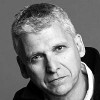Intimate images of 'the real Hotel California'
The legendary Record Plant Studios was where the most iconic rock stars of the 1970s gathered, immersing themselves in the decadent atmosphere. Now a new book offers a glimpse inside – and argues that The Eagles' time there inspired the US band's most famous song.
In 1974, seeking more creative autonomy and a punchier rock sound, The Eagles parted company with their London-based producer, and headed back to their hometown of Los Angeles, California, where Record Plant Studios, founded by legendary audio engineer Gary Kellgren and shrewd businessman Chris Stone, offered a radical alternative. Here – immersed in the studios' relaxed set-up, where every aspect of the rock-star lifestyle was serviced, from hotel suites to hot tubs − they recorded their hit album Hotel California.
Warning: This article contains mentions of drug use.
Even when The Eagles took their partying into the studio, the managers did not mind. As Stone remarks in a revealing new book, published by Thames & Hudson: "The longer we kept them there, the more money we made." With musicians finding it so hard, once checked in, to tear themselves away, it was little wonder that within a year of the title track's release, there were whisperings that the Record Plant was the "real" Hotel California.
Buzz Me In – Inside the Record Plant Studios, by veteran music journalists Martin Porter and David "Mr Bonzai" Goggin, tells the story of one of the US's most successful recording studios during its most decadent years; from its beginnings (in 1968) in New York – where Jimi Hendrix's Electric Ladyland was made – to its wild Californian incarnations in LA and Sausalito, recording rock legends such as Fleetwood Mac, The Who and The Eagles.
Buzz Me In, named after the password used to gain entry to the LA studio, invites the public into a rock 'n' roll world that few have seen. Accompanied by a playlist of the studios' seminal recordings, it draws on Stone's memoirs and archives, behind-the-scenes images, and more than 100 interviews with the artists, producers and studio staff who helped shape Record Plant's success.
In the 1970s, Porter and Goggin got closer than most to the secret world behind the studio's doors. "It took me many years to realise that it was a pretty special time," Porter tells the BBC. Forty years on, one figure who had survived this frenzied period stood out: Chris Stone, who is pictured in the book in front of the bubble-written logo designed by Kellgren.
"Chris Stone was very prominent in the business and told great stories," says Porter, who was convinced that Stone's memories of the Record Plant's wildest decade were a book in the making. Yet Stone kept knocking him back, insisting: "The story dies with me, Porter." But in the last two years of his life (he died in 2016), he relented, uniting Porter with Goggin, his close friend and publicist, to help steer the endeavour.
Record Plant was special. "The major artists, that's where they wanted to go," Goggin tells the BBC. It led the race for the latest technology ("more tracks, bigger speakers…") and "created an environment that was unlike the traditional, [more clinical] recording studios".
It also gave artists more freedom from the record labels, creating a blueprint for a new way of working that was later........






















 Toi Staff
Toi Staff Gideon Levy
Gideon Levy Tarik Cyril Amar
Tarik Cyril Amar Stefano Lusa
Stefano Lusa Mort Laitner
Mort Laitner Robert Sarner
Robert Sarner Mark Travers Ph.d
Mark Travers Ph.d Andrew Silow-Carroll
Andrew Silow-Carroll Constantin Von Hoffmeister
Constantin Von Hoffmeister Ellen Ginsberg Simon
Ellen Ginsberg Simon
